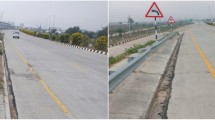Abstract
The ogee-crested spillway is a passage in a dam through which the design flood could be disposed of safely to the downstream. Spillways of improper design or insufficient capacities have caused failures of dams. Therefore, the spillway must be hydraulically and structurally adequate. This paper presents Gene-Expression Programming (GEP) models as an alternative approach to prediction of design coefficients in ogee-crested spillway structure. New formulations for prediction of design coefficient are developed using GEP and regression models. The performance of GEP was found to be satisfactory and encouraging when compared with regression model in predicting of design coefficient. This capability of GEP makes it unique and more effective when compared with regression models evaluated in this paper. The superior performance of GEP is attributed to the powerful Artificial Intelligence (AI) techniques for computer learning inspired by natural evolution to find the appropriate mathematical model (expression) to fit a set of fits. This study highlights the utility of AI-based models with a view to increase their usage by engineers and planners working on spillway design problems.
Similar content being viewed by others
References
Azamathulla, H. M., Ghani, A. A., Leow, C. S., and Chang, C. K. (2011). “Gene-Expression programming for the development of a stage-discharge curve of the Pahang river.” Water Resour. Manage., Vol. 25, No. 11, pp. 2901–2916, DOI: 10.1007/s11269-011-9845-7.
Azamathulla, H. M. (2012). “Gene-expression programming to predict scour at a bridge abutment.” J. Hydroinformatics, Vol. 14, No. 2, pp. 324–331, DOI: 10.2166/hydro.2011.135.
Bagatur, T. and Onen, F. (2014). “A predictive model on air entrainment by plunging water jets using GEP and ANN.” KSCE J. Civil Eng., KSCE, Vol. 18, No. 1, pp. 304–314, DOI: 10.1007/s12205-013-0210-7.
Baylar, A., Unsal, M., and Ozkan, F. (2011). “GEP Modeling of oxygen transfer efficiency prediction in aeration cascades.” KSCE J. Civil Eng., KSCE, Vol. 15, No. 5, pp. 799–804, DOI: 10.1007/s12205-011-1282-x.
Chatila, J. and Tabbara, M. (2004). “Computational modeling of flow over an ogee spillway.” Computers and Structures, Vol. 82, No. 22, pp. 1805–1812, DOI: 10.1016/j.compstruc.2004.04.007.
Chow, V. T. (1959). Open channel hydraulics, New York: McGraw Hill.
Eldrandaly, K. (2009). “Integrating gene expression programming and geographic information systems for solving a multi-site land use allocation problem.” American Journal of Applied Sciences, Vol. 6, No. 5, pp. 1021–1027, DOI: 10.3844/ajassp.2009.1021.1027.
Ferreira, C. (2001). “Gene expression programming: A new adaptive algorithm for solving problems.” Complex Systems, Vol. 13, No. 2, pp. 87–129.
Ferreira, C. (2004). Gene expression programming and the evolution of computer programs, In: L.N. de Castro, F.J. Zuben (Eds.), Recent Developments in Biologically Inspired Computing, Idea Group Publishing, pp. 82–103.
Ferreira, C. (2006). Gene-expression programming: Mathematical modeling by an artificial intelligence, Springer, Berlin.
Guven, A. and Aytek, A. (2009). “A new approach for stage-discharge relationship: Gene-expression programming.” J. Hydrologic Eng., Vol. 14, No. 8, pp. 812–820, DOI: 10.1061/(ASCE)HE.1943-5584.0000044.
Guven, A. and Gunal, M. (2008). “Genetic programming approach for prediction of local scour downstream hyraulic structures.” J. Irrig and Drain Eng., Vol. 134, No. 2, pp. 241–249, DOI: 10.1061/(ASCE)0733-9437(2008)134:2(241).
Guven, A. and Azamathulla, H. M. (2012). “Gene-expression programming for flip-bucket spillway scour.” Water Science & Technology, Vol. 65, No. 11, pp. 1982–1987, DOI: 10.2166/wst.2012.100.
Kayadelen, C. (2011). “Soil liquefaction modeling by genetic expression programming and neuro-fuzzy.” Expert systems with applications, Vol. 38, No. 4, pp. 4080–4087, DOI: 10.1016/j.eswa.2010.09.071.
Kisi, O., Emiroglu, M. E., Bilhan, O., and Guven, A. (2012). “Prediction of lateral out flow over triangular labyrinth side weirs under subcritical conditions using soft computing approaches.” Expert systems with Applications, Vol. 39, No. 3, pp. 3454–3460, DOI: 10.1016/j.eswa.2011.09.035.
Khan, M., Azamathulla, H. M., and Tufail, M. (2012). “Gene-expression programming to predict pier scour depth using laboratory data.” J. Hydroinform, Vol. 14, No. 3, pp. 628–645, DOI: 10.2166/hydro.2011008.
Linsley, R. K., Franzini, J. B., Freyberg, D. L., and Tchobanoglous, G. (1992). Water resources engineering, Singapore: Mc Graw Hill.
Mays, L. W. and Tung, Y. K. (1992). Hydrosystems engineering and management, Singapore: Mc Graw Hill.
Onen, F. (2014). “Prediction of penetration depth in a plunging water jet using soft computing approaches.” Neural Comp. Appl., Vol. 25, No. 1, pp. 217–227, DOI: 10.1007/s00521-013-1475-y.
Savage, B. M. and Johnson, M. C. (2001). “Flow over ogee spillway: Physical and numerical model case study.” J. Hydraul Eng., ASCE Vol. 127, No. 8, pp. 641–649, DOI: 10.1061/(ASCE)0733-9429(2001)127:8(640).
Song, C. and Zhou, F. (1999). “Simulation of free surface flow over spillway.” J. Hydraul Eng., Vol. 125, No. 9, pp. 959–967, DOI: 10.1061/(ASCE)0733-9429(1999)125:9(959).
Teodorescu, L. and Sherwood, D. (2008). “High energy physics event selection with gene expression programming.” Comp. Physics Commun., Vol. 178, No. 6, pp. 409–419, DOI: 10.1016/j.cpc.2007.10.003.
Unsal, M. (2012). “GEP Modeling of penetration depth in sharp crested weirs.” Arab. J. Sci. Eng., Vol. 37, No. 8, pp. 2163–2174, DOI: 10.1007/s13369-011-0037-9.
USACE (1990). Hydraulic design of spillways, United States Army Corps of Engineers, EM 1110-2-1603, Department of the Army, Washington.
USBR (1987). Design of small dams, United States Bureau of Reclamation. US Government Printing Office, Washington.
Yanmaz, M. (2001). Applied water resources engineering, Metu Press.
Author information
Authors and Affiliations
Corresponding author
Rights and permissions
About this article
Cite this article
Bagatur, T., Onen, F. Computation of design coefficients in ogee-crested spillway structure using GEP and regression models. KSCE J Civ Eng 20, 951–959 (2016). https://doi.org/10.1007/s12205-015-0648-x
Received:
Revised:
Accepted:
Published:
Issue Date:
DOI: https://doi.org/10.1007/s12205-015-0648-x




